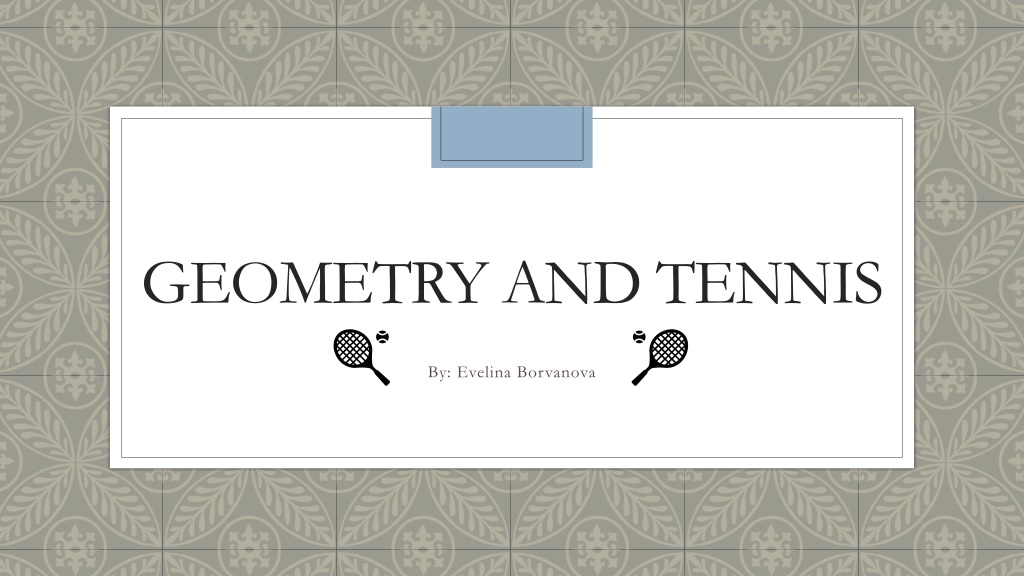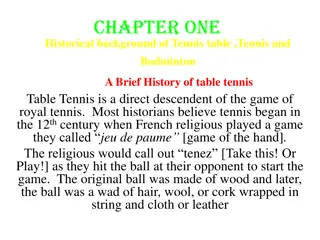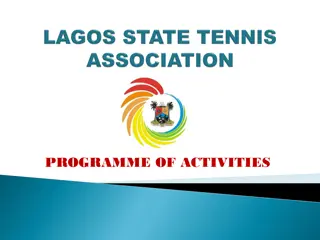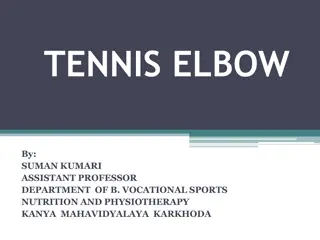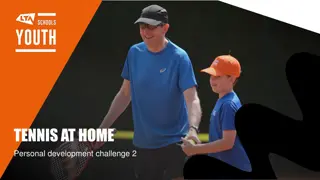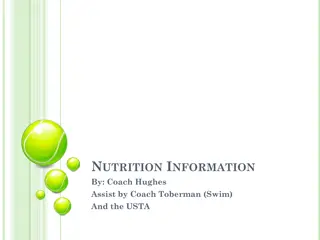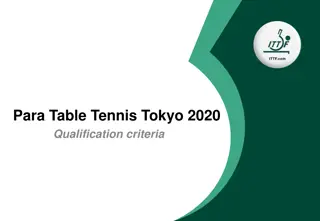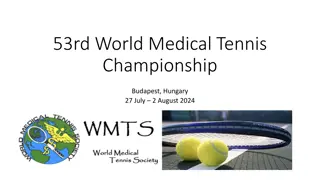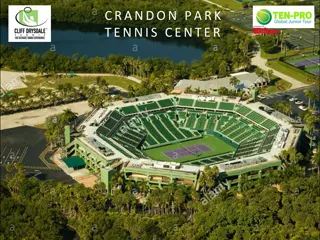Exploring the Intersection of Geometry and Tennis
Understanding the fusion of mathematics and tennis through court geometry, positioning strategies, and shot selection. Delve into the direct and indirect applications of mathematics in sports, uncovering the significance of angles, court dimensions, and player positioning in enhancing gameplay dynamics and tactical decision-making. Discover the intricate balance between geometry and athletic performance on the tennis court.
Download Presentation

Please find below an Image/Link to download the presentation.
The content on the website is provided AS IS for your information and personal use only. It may not be sold, licensed, or shared on other websites without obtaining consent from the author. Download presentation by click this link. If you encounter any issues during the download, it is possible that the publisher has removed the file from their server.
E N D
Presentation Transcript
GEOMETRY AND TENNIS By: Evelina Borvanova
Introduction Relation of Mathematics to Sport Direct Application 27% Indirect Application 73%
Creating more Angles with your Positioning The closer a player moves in, the greater number of angles they create. The range continuous to increase the closer you get to the net. Getting inside the baseline to hit groundstrokes usually requires more technique.
Hitting Crosscourt on Rallies 1. Hitting crosscourt makes the ball pass over the lower portion of the net 2. The tennis court, which 78 feet in length, is about 10% longer if you hit cross court than down-the-line. 3. Court geometry becomes extremely important when one considers the possible replies from your opponent. Figure 1 Figure 2 Figure 3
Recovering Back to the Middle on Defense The point at the middle of the range of your opponent s widest possible replies. The blue line bisects the angle formed by the widest possible replies. Returning back to the middle is one of the most essential skills in tennis . Figure 1 Figure 2 Figure 3
Hitting down-the-line on volleys The golden rule is to volley straight ahead. The actual difference in distance may at first seem minimal, however it can be very crucial during a match. The opponent s reply passes over the net more quickly when he or she are hitting a shot down the line. Figure 1 Figure 2 Exception when you are in center court.
Conclusion and Further Questions Further Questions to Possibly Explore: 1. How can you calculate the probability of a game? 2. What concepts of physics are used in tennis? 3. How can I achieve a perfect serve? 4. How does court geometry change between playing singles or doubles? 5. What other sports use geometry? 6. Are there certain exceptions to these geometry rules? 7. Does the Hawk-Eye use math calculations?
Works Cited: Brody, H. Unforced errors and error reduction in tennis. British Journal of Sports Medicine, BMJ Group, May 2006, www.ncbi.nlm.nih.gov/pmc/articles/PMC2577482/. Djokovic v Federer sensational rally - Wimbledon 2014. YouTube, Wimbeldon, 6 July 2014, www.youtube.com/watch?v=ZCxcuILEgco. Geometry and the Art of Tennis. Essential Tennis, 5 Jan. 2017, www.essentialtennis.com/geometry-and-the- art-of-tennis-3/. Meier, Florian. Tennis Lesson: Hitting Cross-Court vs. Hitting Down The Line. YouTube, OnlineTennisLessons, 11 Nov. 2013, www.youtube.com/watch?v=gWeGmhL7sgk&t=401s. Swanberg, Mike . Bird's Tennis Tips: The Geometry of Tennis. Xtreme Tennis News, 7 Feb. 2005, www.tennis- x.com/fun/tennistipsgeometry.php. Thomas, Rachel. Spinning the perfect serve. Tennis | Maths and Sport, University of Cambridge, sport.maths.org/content/category/tags/tennis. Waite, Ron. Tennis Server - Turbo Tennis. Tennis Server - Turbo Tennis - Euclidean Tennis: A Geometry of the Game, www.tennisserver.com/turbo/turbo_98_5.html.
